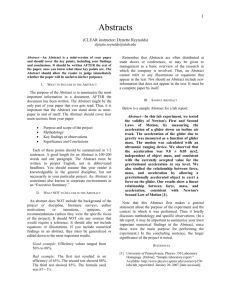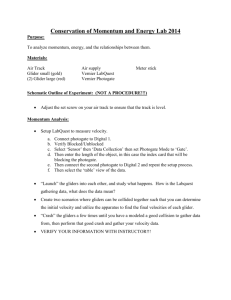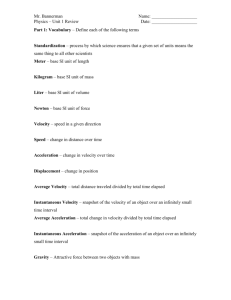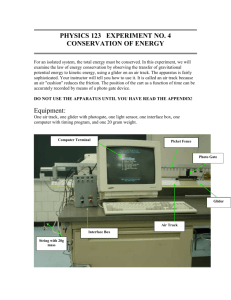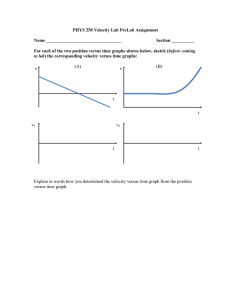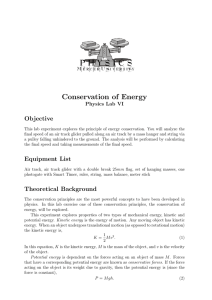AP Physics Lab: Instantaneous Velocity & Gravity
advertisement
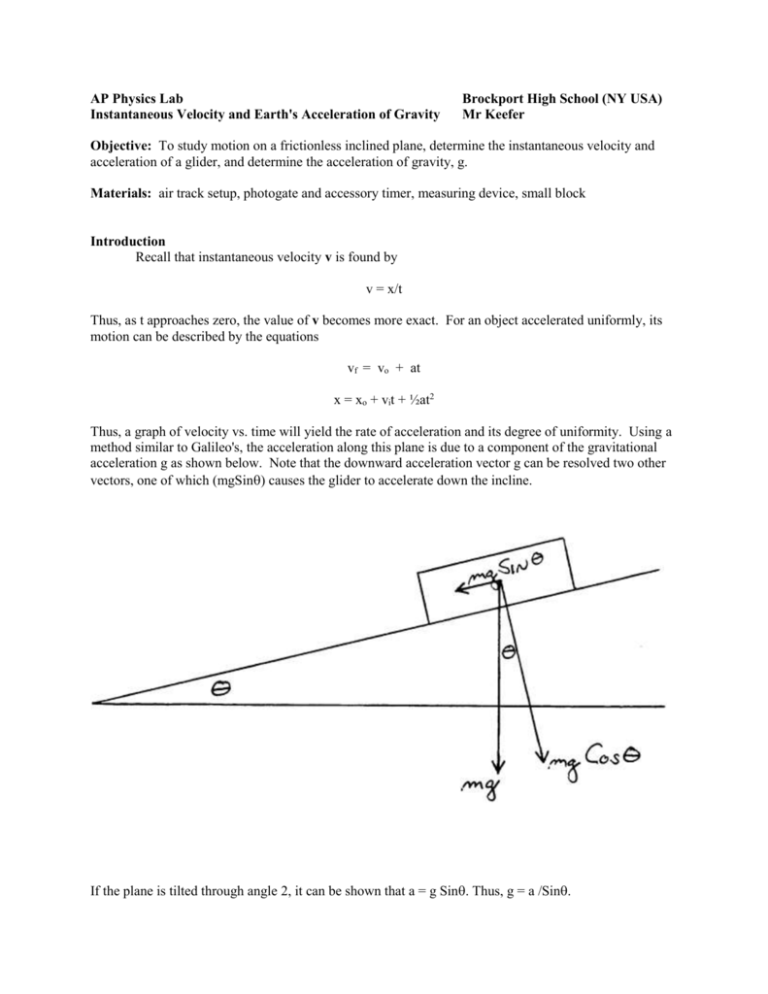
AP Physics Lab Instantaneous Velocity and Earth's Acceleration of Gravity Brockport High School (NY USA) Mr Keefer Objective: To study motion on a frictionless inclined plane, determine the instantaneous velocity and acceleration of a glider, and determine the acceleration of gravity, g. Materials: air track setup, photogate and accessory timer, measuring device, small block Introduction Recall that instantaneous velocity v is found by v = x/t Thus, as t approaches zero, the value of v becomes more exact. For an object accelerated uniformly, its motion can be described by the equations vf = vo + at x = xo + vit + ½at2 Thus, a graph of velocity vs. time will yield the rate of acceleration and its degree of uniformity. Using a method similar to Galileo's, the acceleration along this plane is due to a component of the gravitational acceleration g as shown below. Note that the downward acceleration vector g can be resolved two other vectors, one of which (mgSin) causes the glider to accelerate down the incline. If the plane is tilted through angle , it can be shown that a = g Sin. Thus, g = a /Sin. Methods I. Measurement of Instantaneous Velocity 1. Insert a small block beneath the single foot of the air track. Place the photogate timer approximately near the middle of the air track. Set to the GATE position. 2. Select one of several "flags" and record its effective length (x) by triggering the timer. Place the flag in the slot of the glider such that its center is centered on the glider. 3. Allow the glider to travel down the air track from a constant starting position xo and record the time required for the flag to pass through the gate. Repeat once and determine the average time. 4. Repeat for the other flags. 5. Calculate the velocity for each trial using the average time. 6. Plot a graph of velocity vs. x. 7. Extend the slope back to x = 0. This represents the instantaneous velocity of the glider as its center passes through the photogate. II. Determining the Earth's Acceleration of Gravity, g 1. Determine the angle of the air track by measuring the length (L) from the pivot point to the location of the leveling, then the height (h) of the air track at that point. 2. Set the photogate to PULSE mode, and place a short flag on the glider. Place an auxiliary photogate such that it will be triggered immediately after the glider starts accelerating, and will be stopped as the glider passes through the main photogate. 3. Allow the glider to accelerate from rest and record time. 4. Calculate the acceleration of the glider from the instantaneous velocity found on your graph above. 5. Calculate a percent error using for Brockport NY using the equation in the laboratory. Note: use caution with significant figures.
